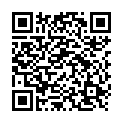|
|
|
| Module code: E502 |
|
3V+1U (4 hours per week) |
|
5 |
| Semester: 5 |
| Mandatory course: yes |
Language of instruction:
German |
Assessment:
Written examination
[updated 11.03.2010]
|
E502. Biomedical Engineering, Bachelor, ASPO 01.10.2011
, semester 5, mandatory course, course inactive since 28.11.2013
E502 Electrical Engineering, Bachelor, ASPO 01.10.2005
, semester 5, mandatory course
|
60 class hours (= 45 clock hours) over a 15-week period.
The total student study time is 150 hours (equivalent to 5 ECTS credits).
There are therefore 105 hours available for class preparation and follow-up work and exam preparation.
|
Recommended prerequisites (modules):
E403 Systems theory
[updated 11.03.2010]
|
Recommended as prerequisite for:
E602 Control Engineering II
[updated 12.03.2010]
|
Module coordinator:
Prof. Dr. Benedikt Faupel |
Lecturer:
Prof. Dr. Benedikt Faupel
[updated 11.03.2010]
|
Learning outcomes:
Students will acquire the basic skills necessary for understanding how control systems function. They will learn the terminology, the key control system parameters and the mathematical methods and tools needed to design, set up and optimize controllers for standard control tasks. The knowledge acquired in this module will enable students to solve the control problems in the automation engineering lab course and will provide them with the background needed to teach themselves more advanced methods of control engineering. This module forms the foundation for Control Engineering†II and the Automation Engineering lab course.
[updated 11.03.2010]
|
Module content:
1.Introduction and fundamentals of analogue control engineering
Closed-loop control elements and block diagrams
Definitions, standards and nomenclature, distinction between open- and
closed-loop control Examples of practical implementations of closed-loop
control systems in process plants
2.Static and dynamic behaviour of closed-loop control systems
Setpoint and interference response Determination of the stationary deviation
for various input signal characteristics
3.Design, adjustment and optimization of controllers in the time domain
Tuning closed-loop control systems to give a defined damping response
Tuning closed-loop control systems using the Ziegler-Nichols, Chiens, Hrones
and Reswick methods Tuning using the T-sum rule Tuning via the symmetric
optimum principle and optimum amplitude methods
4.Design, tuning and optimization of closed-loop controllers using the
frequency response plot method The root-locus method Phase margin and gain
margin tuning Tuning closed-loop control parameters in Bode plots
5.Discontinuous control (two-position and three-position controllers)
Time response Optimization / Tuning discontinuous controllers
6.Introduction to MATLAB/SIMULINK
[updated 11.03.2010]
|
Teaching methods/Media:
Lecture notes, PC simulation using Matlab/Simulink, video projector
[updated 11.03.2010]
|
Recommended or required reading:
Unbehauen, H.: Regelungstechnik I; 11. Auflage; Vieweg Verlag, Braunschweig; 2001
Lutz, H.; Wendt, W.: Taschenbuch der Regelungstechnik; 3. Auflage; Verlag Harri Deutsch, Frankfurt/Main 2000
Föllinger, O.: Regelungstechnik; 8. Auflage; Hüthig Verlag, Heidelberg 1994
Föllinger, O.: Laplace- und Fourier-Transformation. Hüthig Verlag, Heidelberg, 1986
Meyr, H.: Regelungstechnik und Systemtheorie. Wissenschaftsverlag Mainz, Aachen, 2000
Samal, E.; Becker, W.: Grundriss der praktischen Regelungstechnik. Oldenbourg Verlag, München 1996
L. Merz; H. Jaschek: Grundkurs der Regelungstechnik, Oldenbourg Verlag, München, 1985
H. Jaschek; W. Schwimm: Übungsaufgaben zum Grundkurs der Regelungstechnik,
Oldenbourg Verlag, München 1993
Leonard, W.: Einführung in die Regelungstechnik; 6. Auflage. Vieweg Verlag, Braunschweig 1992
Walter, H.: Kompaktkurs Regelungstechnik. Vieweg Verlag, Braunschweig 2001
Tröster, Fritz: Steuerungs- und Regelungstechnik für Ingenieure. Oldenbourg Verlag, München 2001
[updated 11.03.2010]
|


